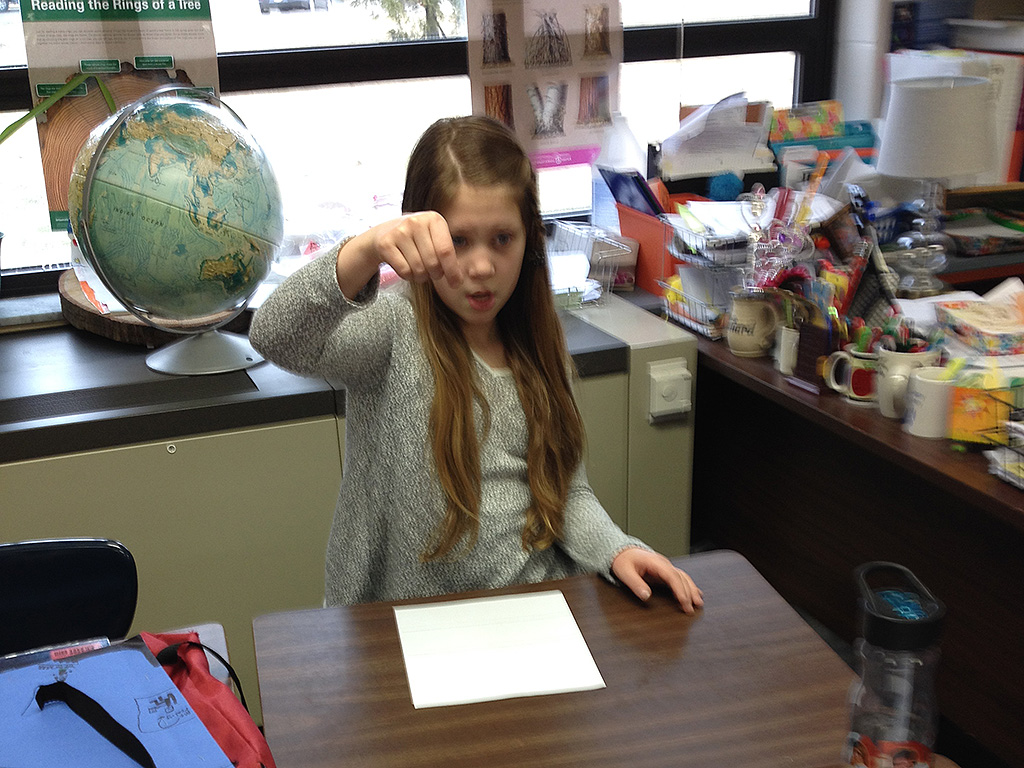Chapter 9: A Large and Lovely Accomplishment: Three Types of Non-Ficton Writing for Fourth Graders
9.4 Reflections

Reflecting on these examples in student nonfiction writing, whether research based, narrative, or investigative, l am made aware of the importance of value and choice. It appears that we have taught our students that fiction is worthy of writing work but have not imparted the same message about nonfiction. So I work hard with my students to construct an understanding that nonfiction writing is valuable and worth working at. It is complex work requiring detailed note taking, accuracy, literary expertise, and completeness and clarity. Likewise I recognize the importance of choice. Choice allows students to explore what they are interested in or passionate about, providing them with the power to choose what they write about. By providing students with these opportunities we help them come to understand what motivates nonfiction writers and readers as they research and discover information that is fascinating and enlightening.
Sydney’s nonfiction writing helped me recognize the final consideration necessary when providing support for their writing—time. She submitted a researched piece about horses as soon I gave students permission to write on the blog. I already knew how much she loved horseback riding and every piece of girly paraphernalia emblazoned with a horse. I was pleased to see she had chosen to research and write in her free time, and felt that self-satisfied expectation only a teacher can know, looking forward to a report incorporating the learning Sydney had already demonstrated in her required work. I winced reading the first sentence, though, and reading on confirmed that she had copied, verbatim, a pretty lengthy passage from an uncited resource. She did not pull in any of her prior knowledge to build from this new information. None of her learning on how to research or on the purpose of research, had carried over to this work.
She wanted her writing published on the blog, but before that happened, we talked. I reminded her that this was plagiarism and asked her to consider her audience. Some other students in the class loved horses also, I pointed out. I was sure she had learned some useful information from her research that could be combined with her understanding of classmates’ interests, to create an important piece. What had she learned that those classmates would like to know? She wrote again:
…Horses have the biggest eyes of any mammal. Because horses eyes are on the side of its head, they can’t see directly in front of them, behind them and under them. If you are to ever ride a horse, never go in those places. They are dangerous and horses can hurt you really bad. If you are nice to them, you will get kindness returned back to you….
With her second attempt Sydney had pulled together information gathered from multiple resources and used it to give valuable advice to her audience. This was reflection, the final and most difficult part of research. It didn’t happen without intervention, however. As a matter of fact, initially Sydney had not applied most of what she had learned about research. Here was one more takeaway for me in supporting my students’ writing: it will take time. These are new skills. It is easy to assume that fourth graders have some experience with nonfiction writing, but I need to attend to the fact that some aspects are completely new to them. They need explicit instruction that shows them the value of each piece to the whole. Then they need practice, to see again and again how their work can be valued by their audience.
By writing what they experience and know, pulling it together into something meaningful to someone else and then giving it away, students come to understand the power of nonfiction writing and that it is, indeed, a large and lovely accomplishment.